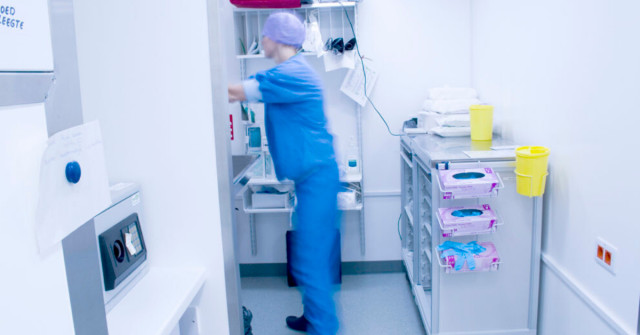Paint to protect

New coatings on surfaces can make the healthcare environment a safer one, says David Simoes
The NHS and keyworker clap became a fixed part of our weekly pandemic routine.
As we congregated in gardens and driveways or hung outside our windows – banging pots or applauding loudly – we regained some sense of community that lockdown has taken away from us. And, of course, we recognise the sheer heroism and altruism of those who continue to care for us in the face of a global virus.
Viral infections and germs have long been an issue for healthcare settings, but the virulent threat of Covid-19 has concentrated minds on how to further tackle the risk of infection and disease spread to patients in the healthcare system
Frontline defences
The enduring image of hospitals and healthcare settings during this pandemic may be of keyworkers fully geared up in PPE and being ‘sprayed’ down as they enter and exits wards. Such highly visible defences and ways of protecting both staff and patients only tell half the story.
For a long time, there have been less conspicuous means of preventing the spread of germs and viruses. Antimicrobial paint is a significant one of these.
This specially formulated paint contains an antimicrobial agent that diminishes or prevents the ability of microorganisms to grow. Such paints came to the fore amid growing concerns over the incidence of hospital-acquired infections in recent decades: they combat the spread of surface microbes, airborne contaminants and 99.9% of all common pathogens. They are also highly effective in preventing mould and mildew growth. The tough, durable finish they provide is designed to withstand the inevitable wear and tear that occurs in a hospital.
Taking into account the increased uptake during the current global crisis, market research by the IMARC group claims that the market for antimicrobial paint is likely to increase at a CAGR of 11.3% between 2020 and 2025.
Much of this growth is seen as coming from its expanded application in healthcare settings, although food and beverage is another sector highlighted as further adopting antimicrobial coatings (for packaging).
Combining comfortable heating with microbial resistance
Radiant ceiling panels have been working for the healthcare industry for nearly 50 years. In recent years their potential for energy efficiency, low-maintenance, easy installation and reducing the spread of infections has been recognised by the Department of Health.

According to the 2013 note 11-01 on Facilities for Primary and Community Care Services, ‘ceiling-mounted radiant panels can reduce infection risk and increase useable space. For these reasons, they are often the preferred choice of heat’, going on to say that ‘In comparison with wall-mounted radiators, ceiling-mounted radiant panels can reduce infection risk and increase useable space. For these reasons, they are often the preferred choice of heat emitter within primary and community care premises’
These reinforce the duty of care to deliver comfort and protect the well-being of those within the rooms or wards by inhibiting bacterial growth, such as E.coli and MRSA, on their surface. In addition, these panels distribute heat via water through copper pipes, rather than through recirculation of air thus eliminating the transfer of dust and other air pollutants, such as mould, fungi, bacterium and viruses that can impact a person’s health.
Due to the lack of moving parts, compared to other forms of heating, radiant ceiling panels need only very limited maintenance and are easy to clean using just a cloth and a mild detergent.
Healthier hospitals
Antimicrobial paint is likely to see a massive uptake, and not just as part of heating and cooling solutions in hospitals. The omnipresent threat of the coronavirus may have focused minds firmly on an infection issue that has been a very real threat for many years already.
In 2011, NICE estimated that 300,000 patients a year in England alone acquired a healthcare-associated infection as a result of care within the NHS. It said this represented 6.4% of all patients treated and was attracting costs to the NHS that ran into billions of pounds.
The growing use of antimicrobial coatings can help us greatly reduce this cost for healthcare services and risk to healthcare users.
David Simoes is Marketing and Product Manager of Zehnder







